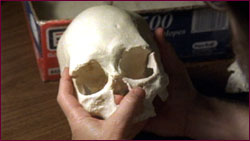
|

|
Dennis Stanford Chairman, Department of Anthropology, Smithsonian Institution It is my view that many roads lead toward knowledge, and the unexpected is often encountered along the journey. Discovery of the remains of a man who lived along the Columbia River 9,000 years ago was itself a surprise. A further wonder is the marvelous story this individual can tell about life in prehistoric America. Should this elder be silenced because people in modern times presumed they already understood all he could teach? The process by which the Americas were peopled, initially and through time, is a multifaceted story with many chapters. Much of this narrative is not well understood. No particular group—be it governmental, ethnic, or scientific—can respectfully claim that their path to understanding this story is paramount. Should a single interpretation or understanding of the course of events thousands of years ago become the accepted truth for all concerned? Such issues were at stake when we challenged the decision by the Army Corps of Engineers to rebury the Kennewick individual without study. Reburial without scientific study and verification by interdisciplinary researchers would deny present and future generations the opportunity to learn and to benefit from significant new information. Preliminary studies indicate that Kennewick Man may tell a different story about the origins and lifestyles of early peoples in North America than that written in textbooks. He may illuminate a past more rich and complex than currently imagined.
Does Race Exist? | Meet Kennewick Man Claims for the Remains | The Dating Game | Resources Transcript | Site Map | Mystery of the First Americans Home Editor's Picks | Previous Sites | Join Us/E-mail | TV/Web Schedule About NOVA | Teachers | Site Map | Shop | Jobs | Search | To print PBS Online | NOVA Online | WGBH © | Updated November 2000 |
 Dennis Stanford
Dennis Stanford
 Kennewick Man, a cast of whose skull appears here,
has the potential to force anthropologists to revise
textbooks on the early peopling of North America,
Stanford says.
Kennewick Man, a cast of whose skull appears here,
has the potential to force anthropologists to revise
textbooks on the early peopling of North America,
Stanford says.